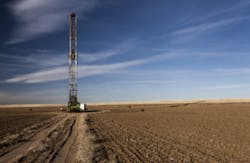The Environmental Protection Agency (EPA) is seeking public comment on what information could be reported and disclosed for hydraulic fracturing chemicals and mixtures and the approaches for obtaining this information, including non-regulatory approaches.
The EPA will also be looking for input on incentives and recognition programs that could support the development and use of safer chemicals in hydraulic fracturing.
A public process through an Advance Notice of Proposed Rulemaking (ANPR) will help inform the EPA’s efforts to promote the transparency and safety of unconventional oil and gas activities while strengthening protection of our air, water, land and communities.
READ ALSO: EPA Revises Guidelines for the Use of Diesel Fuels In Hydraulic Fracturing
“Today’s announcement represents an important step in increasing the public’s access to information on chemicals used in hydraulic fracturing activities,” said James Jones, the EPA’s assistant administrator for the Office of Chemical Safety and Pollution Prevention. “EPA looks forward to hearing from the public and stakeholders about public disclosure of chemicals used during hydraulic fracturing, and we will continue working with our federal, state, local, and tribal partners to ensure that we complement but not duplicate existing reporting requirements.”
EPA’s ANPR includes a list of questions for stakeholders and the public to consider as they develop their comments. Following the 90-day comment period, the agency will evaluate the submitted comments as it considers appropriate next steps.
Advance Notice of Proposed Rulemakings are intended to engage the public and solicit comments and/or information from the public for the EPA’s consideration in addressing a particular issue, including information that the EPA could consider in developing non-regulatory approaches or a proposed rule.
To learn more about EPA’s ANPR, go here.


